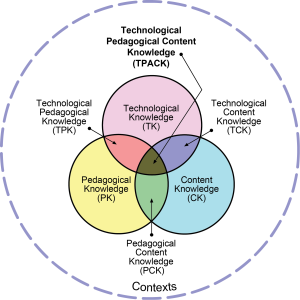Effective Technology Use in Math Class
Ensuring that the technology we bring into math classes fosters active engagement is key.
Your content has been saved!
Go to My Saved Content.Incorporating technology in mathematics classrooms enables educators to craft powerful collaborative learning experiences that support problem solving and flexible thinking. With strategic integration of both content-specific and content-neutral technology, students and teachers can construct their learning together in authentic ways that elevate mathematics learning.
Until recently, one of educators’ primary concerns around educational technology was the lack of access that existed in many American schools. That gap has decreased, but a new digital divide has emerged: The updated 2017 National Education Technology Plan explains that in today’s classrooms many students are using technology as a tool for passive learning rather than engaging in active learning experiences that promote student agency.
The Importance of Content-Specific Pedagogy
In order to create technology-infused experiences that support active mathematics learning, educators must of course have pedagogical content knowledge (PCK)—an understanding of best practices specific to mathematics.
One method a teacher can use to analyze the effectiveness of technology integration is the Technological Pedagogical Content Knowledge (TPACK) framework. This tool supports careful educator reflection on pedagogy, content, and technology not only as separate entities but as overlapping and intersecting domains.

For example, when planning to integrate technology into a lesson, educators can take into account the technology knowledge the students will need, the mathematics content knowledge they’ll need, and the best practices for teaching both the technology and the math. This process is extremely important because without it, the technology may be integrated in a way that is pedagogically inappropriate for mathematics instruction.
Using PCK to Spot Unhealthy Apps and Websites
Teachers start from their understanding of PCK, or best practices for mathematics instruction, in choosing effective technology tools for the mathematics classroom. We know that mathematics should not be focused on speed or quick answer finding. And timed fact testing is a known trigger of math anxiety, which can lead to low mathematics achievement and mathematics avoidance. Yet math apps and websites that focus on speed and rote memorization are readily available and widely used.
This use of technology can promote fear and stress, and it also sends inaccurate messages about the purpose of mathematics. Math is about thinking deeply, discovering patterns, and making connections. Automaticity with math facts and math skills is critical, but how we get students to automaticity matters. A focus on memorization without understanding promotes a joyless, nonsensical form of mathematics that requires remembering a large amount of seemingly disconnected information.
In addition, technology that simply transfers a gradual release—the “I do, we do, you do” structure—to an online format is a form of passive learning that strips math of student agency and rigor. Although gradually releasing responsibility is an effective model in other content areas, in mathematics this model is best flipped to give students the agency to decide what strategies they want to use and how they might solve a problem.
That’s because students should productively struggle with math. We need them to problem solve rather than learn to repeat a specific list of procedures given by the teacher. Problem solving skills are more valuable than memorization, and they’re the true work of mathematicians. If we’re integrating technology into our classrooms to engage students in real-world experiences, our students must be given opportunities to do real mathematics.
Technology That Fosters Deep Mathematical Thinking
When used appropriately, both content-specific and content-neutral technology can be effective in the math classroom. Research indicates that content-specific apps and websites that focus on math learning with the use of virtual manipulatives are highly effective, and in some cases more efficient than physical manipulatives.
The Math Learning Center, for example, provides several manipulative options, such as rekenreks, geoboards, number lines, and number frames. Apps and websites that provide these types of virtual tools are easy to use, support students with conceptual understanding, and increase student access to math tools.
Content-neutral technology includes tools such as virtual whiteboards, handheld clickers, and student collaboration apps. Virtual whiteboard and websites, such as Explain Everything, promote self reflection, enable students to make their learning visible and share and connect ideas, and have been linked with high-level student thinking and teacher questioning.
But content-neutral technology that promotes fast answering, such as handheld clickers, is associated with decreased cognitive demand, most likely due to the likelihood of being used with minimal student discourse.
Being a Critical Consumer of Technology
The educational technology market is flooded with new apps, tech tools, and gadgets, and in some instances, teachers are commended for increased technology use whether it supports healthy math learning or not. Technology can have a truly positive impact on student learning, but it should not replace teaching or ignore research-based best practices for math instruction.
If we believe that students of mathematics need opportunities for discussing math, creating and connecting visuals, analyzing models, discovering patterns, and making generalizations, the technology that we introduce into our classrooms should match those values.
There was a time when simply getting technology into the hands of our students was a goal, but the time has come to slow down and plan for technology integration that truly supports healthy and productive mathematics learning.
